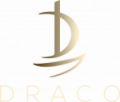A company would want to have two separate departments to manage the purchasing of each because it would allow for more efficient accounting. Direct material cost can be measured and quantified in association with a particular product. Indirect materials are those that are used in the production of the final product indirectly. They cannot be directly measured and conveniently charged to the cost of production. For the consumer, the price of a product reflects not only the cost of direct materials but also the brand value, perceived quality, and market positioning. A luxury watch brand may price its products significantly higher than the sum of its parts, reflecting the brand’s prestige and craftsmanship.
On one hand, opting for high-quality materials can lead to a superior product that commands a premium price and establishes brand reputation. On the other hand, minimizing costs by choosing less expensive materials can increase profit margins, but at the risk of compromising product quality and customer satisfaction. By considering these points, businesses can gain a comprehensive understanding of their direct material costs, which is essential for setting the right price point and maintaining profitability. It’s a delicate balance that requires constant attention and adjustment to align with market dynamics and internal efficiencies.
5. Common Questions About Direct Costs
This can be helpful when the costs of materials fluctuate in the course of production. Direct materials are typically referred to as a cost instead of an actual good or piece of inventory. This way managerial accountants can track the how much the company spends producing these goods and try to streamline the process.
Comparing Direct Costs and Variable Costs
These examples not only showcase the importance of cost-saving measures but also highlight the innovative approaches companies have taken to streamline their procurement and utilization of materials. From the perspective of a financial analyst, direct materials are a key factor in determining the break-even point and in conducting a cost-volume-profit analysis. For a production manager, direct materials are central to process optimization and waste reduction. Meanwhile, a strategic planner might view direct materials in terms of is direct materials a variable cost supply chain management and sourcing strategies.
3. Key Characteristics of Variable Costs:
Misunderstanding these categories can lead to miscalculating the cost of goods sold (COGS), ultimately skewing financial reports and strategic decisions. According to a study by the Small Business Administration, small businesses that effectively manage their variable costs can increase their profitability by up to 30%. This statistic underscores the importance of not only identifying but also controlling these costs. Direct material costs are the costs of raw materials or parts that go directly into producing products. For example, if Company A is a toy manufacturer, an example of a direct material cost would be the plastic used to make the toys.
1. The Significance of Cost Analysis in Financial Planning
- Direct materials, the raw inputs that are directly incorporated into a product, significantly influence the variable costs and, by extension, the overall profitability of a product.
- If Amy did not know which costs were variable or fixed, it would be harder to make an appropriate decision.
- While many direct costs are also variable costs (like direct materials), some are fixed costs.
- With this insight, they can forecast an increased need for wood in July to prepare for the production spike.
These materials are not only pivotal in the creation of products but also represent a significant portion of the variable costs that fluctuate with production volume. From the perspective of a manufacturer, direct materials are the tangible substances that become an integral part of the finished goods and are directly traceable to the product being manufactured. For instance, the steel used in the construction of an automobile or the fabric utilized in a garment are clear examples of direct materials. From the perspective of a cost accountant, direct materials are a significant part of the variable costs that fluctuate with production volume.
AccountingTools
These costs are easily traceable to their cost objects, which can include things like goods, services, projects or departments. The direct costs include direct labour, materials, manufacturing supplies as well as the wages or salaries that are tied to the production. The direct costs can also be fixed like the rent payments, which are directly linked to the production facility.
- Variable costing is a managerial accounting method that can be particularly insightful when analyzing the impact of direct materials.
- If Amy were to continue operating despite losing money, she would only lose $1,000 per month ($3,000 in revenue – $4,000 in total costs).
- For example, consistently exceeding budgeted material costs may indicate opportunities for process improvements or more favorable procurement terms.
- The costs increase as the volume of activities increases and decrease as the volume of activities decreases.
- Each of these perspectives contributes to a comprehensive strategy for managing direct material costs.
The company might use a JIT approach to order just enough wood to meet demand, reducing storage costs (2). They will also need to ensure the wood is of high quality to prevent defects in the furniture (3). Maintaining a good relationship with wood suppliers can ensure they get the best materials at the best prices (4). Choosing sustainably sourced wood can enhance the company’s brand image and appeal to eco-conscious consumers (5). Lastly, implementing a barcode system can help track wood inventory levels accurately (6).
2. Key Strategies for Effective Cost Management
Efficient inventory management ensures that materials are available when needed without overstocking. For example, a computer manufacturer may use demand forecasting to align material orders closely with production schedules, reducing the need for large inventories. Improving the efficiency of material usage in the production process can decrease waste and lower costs. Lean manufacturing techniques, such as just-in-time inventory, can be employed to minimize waste. For example, a textile company could use software to optimize fabric cutting patterns, reducing scrap and saving on material costs.

